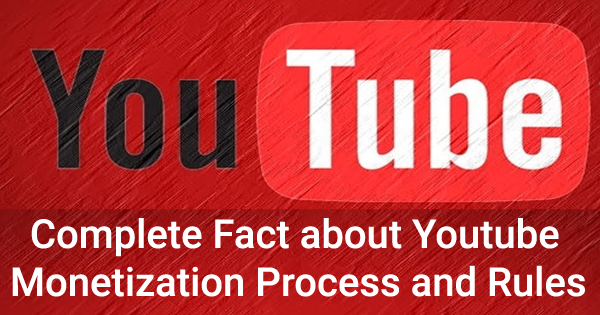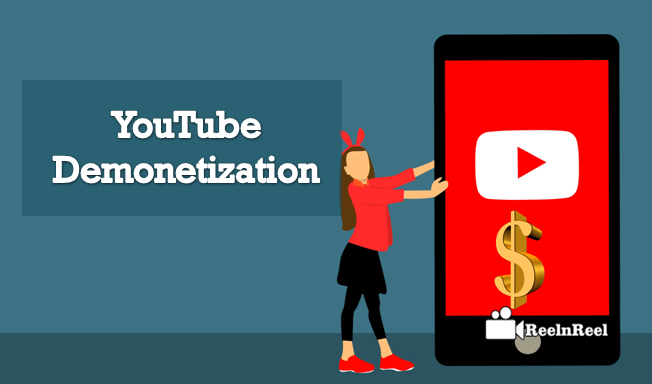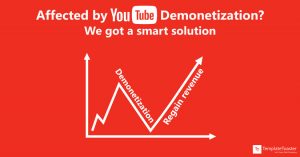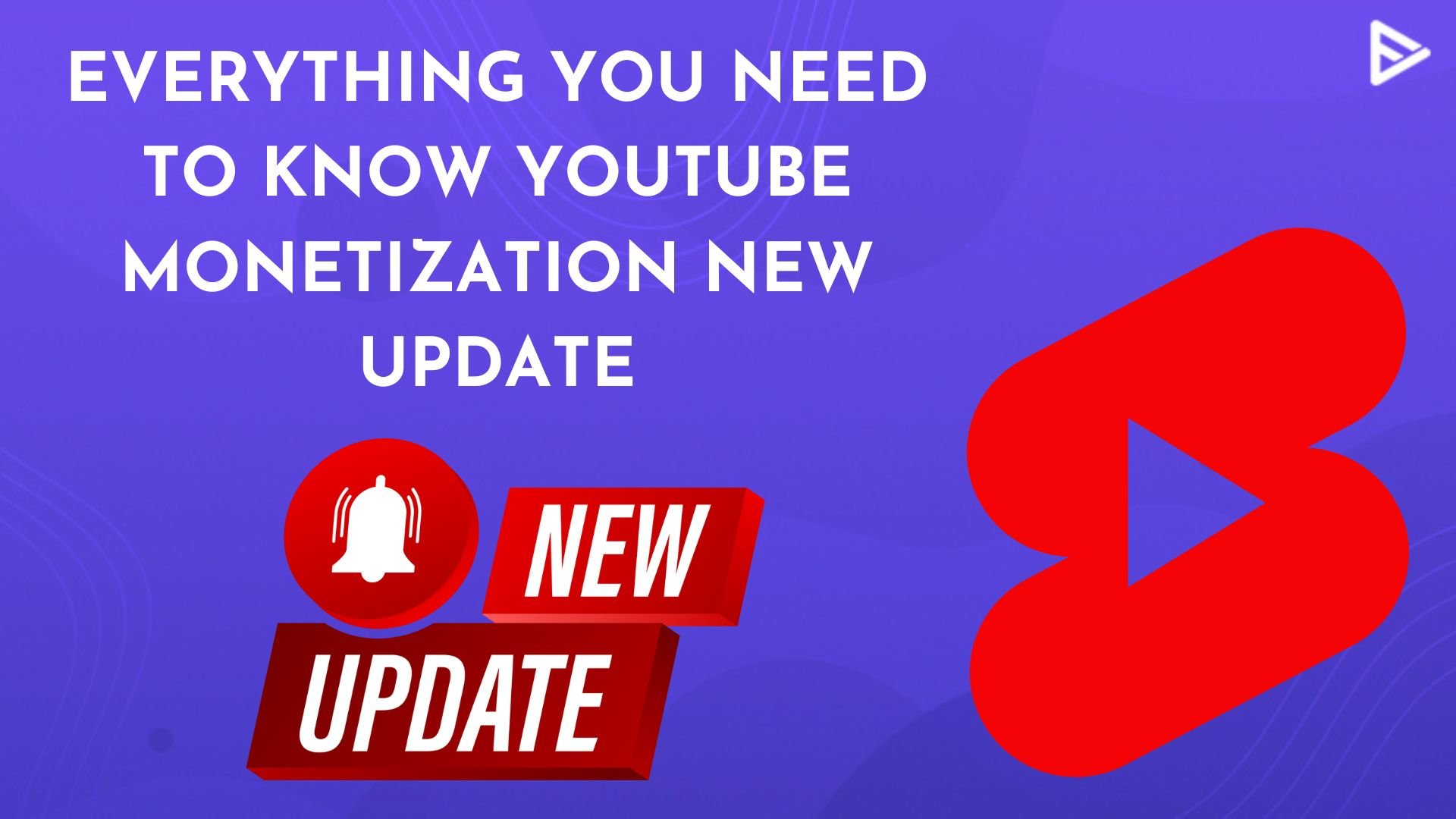YouTube monetization is a game-changer for content creators looking to turn their passion into profit. With over two billion active users, YouTube offers a platform where videos can generate income through various methods. From ads to memberships, the potential revenue streams can be significant. But before creators can start earning, they must navigate
What Does Demonetized Mean on YouTube?

Demonetization on YouTube refers to the process by which a video loses its ability to earn money through ads or other monetization features. It can be a puzzling experience for creators, especially those who rely on their channels for income. Let’s break down the concept and the reasons why it happens.
When a video is demonetized, it typically means that it is no longer eligible to display ads. This can be frustrating for creators who put a lot of effort into their content. Demonetized videos do not earn ad revenue, which can lead to a significant drop in income, particularly for those reliant on YouTube earnings.
### Reasons for Demonetization
Several factors can lead to a video being demonetized. Here’s a closer look:
- Violating Community Guidelines: YouTube has strict community guidelines that govern what creators are allowed to post. Content that is deemed inappropriate—such as hate speech, graphic violence, or adult content—can be flagged and demonetized.
- Copyright Issues: Using copyrighted material without permission can lead to demonetization. Creators must ensure that they own the rights to all the content they use, including music, images, and video clips.
- Misleading Content: If a video is found to misrepresent its content or engage in clickbait practices, it may face demonetization. YouTube wants to foster a trustworthy environment, so misleading videos are often penalized.
- Inappropriate Language: While some profanity may be acceptable, excessive use can lead to demonetization. The context and frequency of strong language are evaluated during the monetization review process.
- Limited Advertiser Appeal: Even if the content is not outright violating guidelines, it might be categorized as low-quality or controversial, leading to a lack of willingness from advertisers to place their ads on the video.
### Effects of Demonetization
The impact of demonetization can vary widely:
- Financial Loss: For many creators, a demonetized video can mean a significant loss in income. This is especially critical for those who rely heavily on YouTube revenue.
- Reduced Reach: Sometimes, a video that is demonetized may receive reduced promotion by YouTube’s algorithm, further limiting its audience reach.
- Creator Frustration: Dealing with demonetization can lead to stress and frustration, as creators often feel they are walking a tightrope trying to adhere to ever-changing rules.
To navigate the challenges of demonetization, content creators should stay informed about YouTube's monetization policies and engage with their audiences in transparent ways. After all, understanding the rules can mean the difference between a thriving channel and one that struggles to keep afloat. Remember, being aware is the first step to ensuring your creative efforts continue to be rewarding!
Also Read This: Using Karaoke Features on YouTube: A Fun Guide to Singing Along
Common Reasons for Demonetization

Demonetization on YouTube can feel like a bolt from the blue for many creators. One moment, your video is lively and buzzing with views, and the next, you receive that dreaded notification stating your content is no longer suitable for ads. But what exactly leads to this? Let's dive into some of the most common reasons for demonetization:
- Violence and Graphic Content: If your video features graphic violence or disturbing imagery, it’s likely to be flagged. YouTube wants to maintain a platform that's family-friendly, and content that doesn't meet that criterion can be demonetized.
- Hate Speech and Harassment: Content that promotes hate speech, discrimination, or bullying is a big no-no. YouTube actively works against content that could be harmful or incite violence against marginalized groups.
- Adult Content: This is a common area where creators face issues. Even mild suggestions of adult themes, like suggestive language or scantily clad individuals, can lead to demonetization.
- Misleading Metadata: If you use clickbait titles, thumbnails, or tags that do not accurately represent your video, you risk having ads removed. Viewers appreciate honesty, and YouTube does too.
- Drugs and Dangerous Acts: Showcasing drug use or risky stunts is frowned upon. Not only can it be dangerous, but it also sends the wrong message to viewers.
There’s also a comprehensive Content Guidelines page you can visit to familiarize yourself with YouTube’s policies. It’s crucial to stay updated since what might seem acceptable today could change tomorrow.
Also Read This: How to Access Unlisted YouTube Videos and the Benefits of Using Them
The Impact of Demonetization on Content Creators

Demonetization can have a significant ripple effect on creators, often leading to both financial and emotional repercussions. Here’s a look at how being demonetized can impact those passionate content creators:
- Loss of Revenue: The most obvious impact is the hit to income. Many creators rely heavily on ad revenue for their livelihoods, and suddenly losing that can be devastating. It’s especially tough if the video was a major hit and had the potential to earn substantial ad revenue.
- Motivation and Mental Health: Facing demonetization can be disheartening. Creators often pour their heart and soul into their work, and when they find it’s not recognized by the platform, it can lead to frustration and burnout. It's important for content creators to remember they’re not alone and to lean on communities for support.
- Changes in Content Strategy: Many creators may feel pressured to change their content style or even the subjects they cover to avoid future demonetization. This can mean sacrificing authenticity for the sake of adhering to YouTube’s guidelines, which may not sit well with everyone.
- Building Alternative Revenue Streams: On the flip side, demonetization can push creators to explore other ways to generate income. This might include merchandise, Patreon, sponsorships, or affiliate marketing, diversifying their revenue sources and reducing reliance on ad income.
- Community Engagement: Creators might turn to their audience for support when facing demonetization. This could mean more interactive content, Q&A sessions, and even crowdfunding efforts to help sustain their channels. Strong community ties are often strengthened in tough times.
In conclusion, while demonetization can feel like a significant setback, many creators find ways to adapt and grow from the experience. Whether it's reshaping their content or building stronger connections with their audience, there’s often a silver lining to each cloud.
Also Read This: Uninstalling YouTube on Roku TV: How to Remove the App Effortlessly
5. Steps to Take if Your Video is Demonetized

Finding out that your video has been demonetized can feel like a punch to the gut, especially after you've poured your heart and soul into it. But don't worry; there are steps you can take to remedy the situation. Here's what you can do:
- Review YouTube's Guidelines: Start by diving into YouTube's monetization policies. Make sure you clearly understand what aspects of your video may have triggered the demonetization. YouTube provides detailed guidelines about content that is considered advertiser-friendly.
- Check Your Email Notifications: YouTube usually sends an email explaining why your video was demonetized. This can provide valuable insights into what might have gone wrong. Be on the lookout for specific reasons so you know what to address.
- Appeal the Decision: If you believe your video complies with all guidelines, don’t hesitate to submit an appeal. YouTube has a process in place for creators to contest demonetization, and sometimes, they may reverse their decision upon review.
- Edit Your Video: If the reasons for demonetization are straightforward — like inappropriate language or content — consider editing your video to align with guidelines. After making the changes, re-upload it or request another review.
- Communicate with Your Audience: If your followers notice the demonetization, be transparent about it. Share the steps you're taking, and encourage them to support your channel by liking, commenting, or sharing. Engaging with your community can help mitigate any negative impacts.
- Learn and Adapt: Use this experience as an opportunity to learn. Analyze what went wrong and how you can evolve your content strategy to avoid similar issues in the future. Adaptability is key in the ever-changing landscape of YouTube.
Remember, you’re not alone in this. Many creators face demonetization at some point, and navigating it is part of the learning curve. Stay positive and proactive!
Also Read This: Are There Issues with YouTube TV Right Now? Here's What's Happening
6. How to Avoid Demonetization on YouTube
So, you want to keep the ad revenue flowing? Who wouldn’t? Avoiding demonetization on YouTube requires a bit of foresight and diligence, but with the right approach, you can create content that fulfills both your creativity and monetization goals. Here are some tips to keep your videos in the clear:
- Follow Community Guidelines: Make it a habit to regularly familiarize yourself with YouTube's community guidelines. Knowing what can and cannot be included in your videos is the first line of defense against demonetization.
- Keep It Family-Friendly: While your content should be authentic to your voice, keeping it family-friendly can help you steer clear of potential pitfalls. Avoid explicit language, graphic violence, and any content that could be deemed offensive.
- Mind Your Thumbnails and Titles: Clickbait might seem tempting, but misleading thumbnails and titles often lead to demonetization. Make sure they accurately reflect the content of your video. Honesty pays off!
- Avoid Controversial Topics: Sensitive or controversial issues can draw the ire of YouTube’s algorithms. If your video touches on a topic that’s likely to ruffle feathers, consider how you’ll frame it to stay within guidelines.
- Maintain Quality Content: High-quality content that provides value to viewers is less likely to be flagged. Focus on creating engaging, informative videos that enrich your audience’s experience.
- Engage with the Community: Interacting positively with your audience in comment sections can create a supportive atmosphere. A strong community can be your best defense in case your video gets flagged for some reason.
It’s all about creating a balance between expressing yourself and adhering to YouTube’s policies. With some thoughtful planning, you can enjoy a smooth ride on your YouTube monetization journey. Keep creating, and keep learning!
Also Read This: How Much Does 20K Views on YouTube Pay? Income Insights
7. Understanding YouTube's Monetization Policies
When diving into the world of YouTube, it's crucial to get a grip on monetization policies. These rules dictate how creators can earn money from their content and what they need to do to stay in the green. YouTube's monetization isn't just about making videos; it's about following guidelines that ensure your content is advertiser-friendly.
Firstly, to start earning money, you need to be a part of the YouTube Partner Program (YPP). This program comes with specific criteria:
- 1,000 Subscribers: You need at least 1,000 subscribers on your channel.
- 4,000 Watch Hours: Your videos must have accumulated a total of 4,000 public watch hours in the past 12 months.
- Follow All Policies: You must adhere to YouTube’s monetization policies, including their community guidelines.
- AdSense Account: You need to have a linked AdSense account to receive payments.
Once you meet these requirements, you can apply for monetization, and YouTube will review your channel. This review process can take time, and that’s where understanding the nuances of the policies comes into play.
One important aspect is adhering to advertiser-friendly content guidelines. For example:
- Avoid excessive profanity.
- Steer clear of adult content.
- Stay on the right side of copyright laws.
If your content is deemed inappropriate, it might limit the types of ads that can run, affecting your overall earnings. YouTube can also demonetize channels or specific videos if they violate these policies, so keeping abreast of the rules is essential.
Another factor is the Content ID system, which identifies copyrighted material in your videos. If your video contains copyrighted music or footage, it could be flagged, and any potential revenue generated will go to the copyright holder instead of you. To avoid this, consider using royalty-free music and original footage.
It’s also worth mentioning Community Guidelines strikes, which can occur if your content violates YouTube's policies. Accumulating strikes can jeopardize your monetization status and may even result in channel termination. The best strategy? Stay informed, create responsibly, and always strive for quality content that resonates with your audience.
8. Conclusion: Navigating YouTube Monetization Challenges
Navigating the world of YouTube monetization can feel like trying to dance on a tightrope—one misstep, and you could be in a precarious situation. However, understanding the rules and regulations is your safety net.
As we’ve discussed, YouTube's monetization policies are there to protect both creators and advertisers. As a creator, you must understand these policies to maximize your earnings. Here are a few tips to help you stay on track:
- Stay Updated: YouTube regularly updates its policies, so don’t forget to check the YouTube Help Center for the latest changes.
- Engage with Your Audience: Building a loyal community can lead to more views and, ultimately, higher earnings.
- Experiment and Adapt: Don’t be afraid to try new content styles to see what resonates with your viewers while keeping within the guidelines.
By creating original, valuable content and maintaining transparency with your audience, you position yourself for long-term success on the platform. While the challenges of monetization can be daunting, each obstacle is an opportunity to learn and grow as a creator. So gear up, stay informed, and let your creativity flow—YouTube is waiting!
 admin
admin








